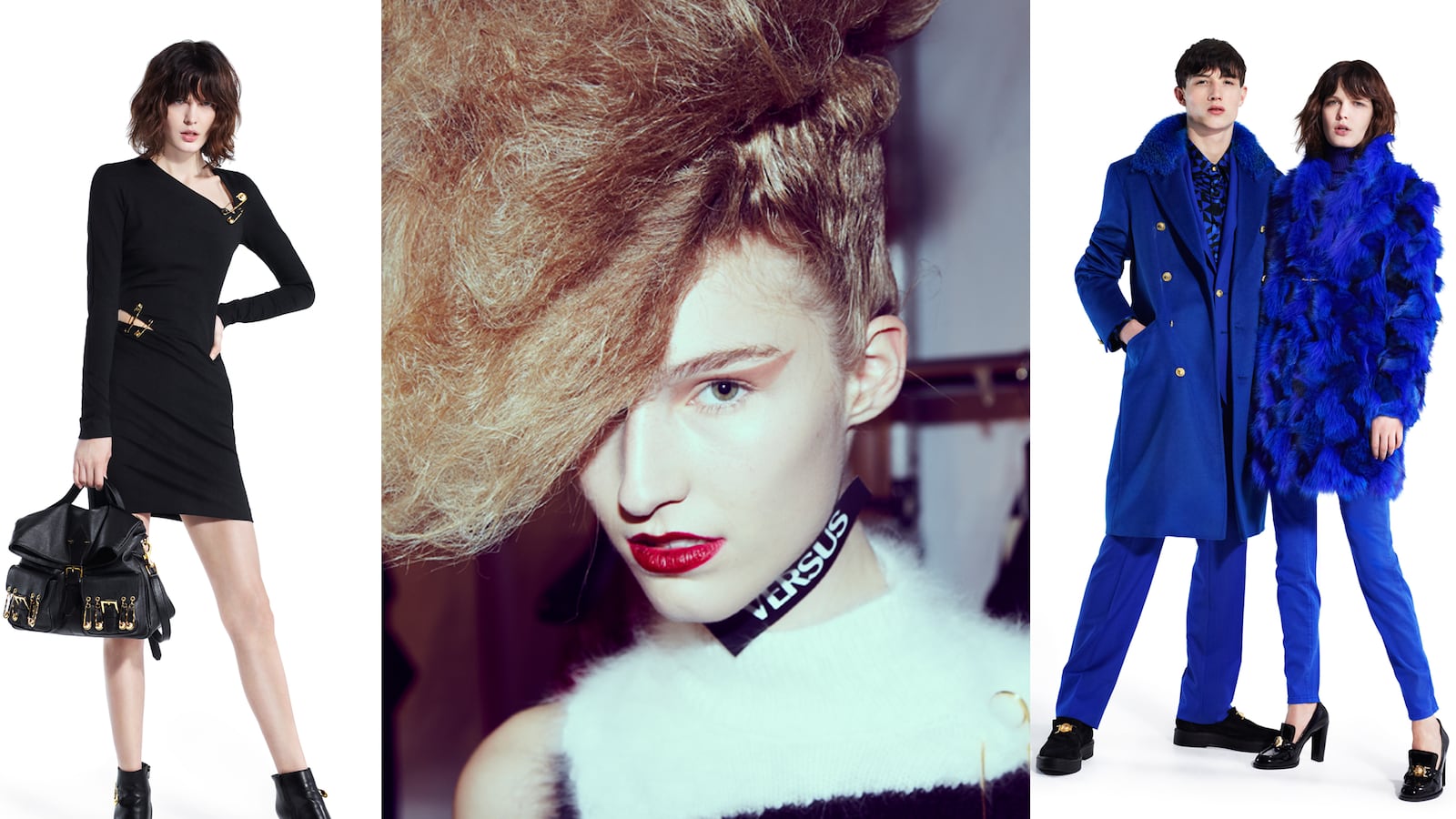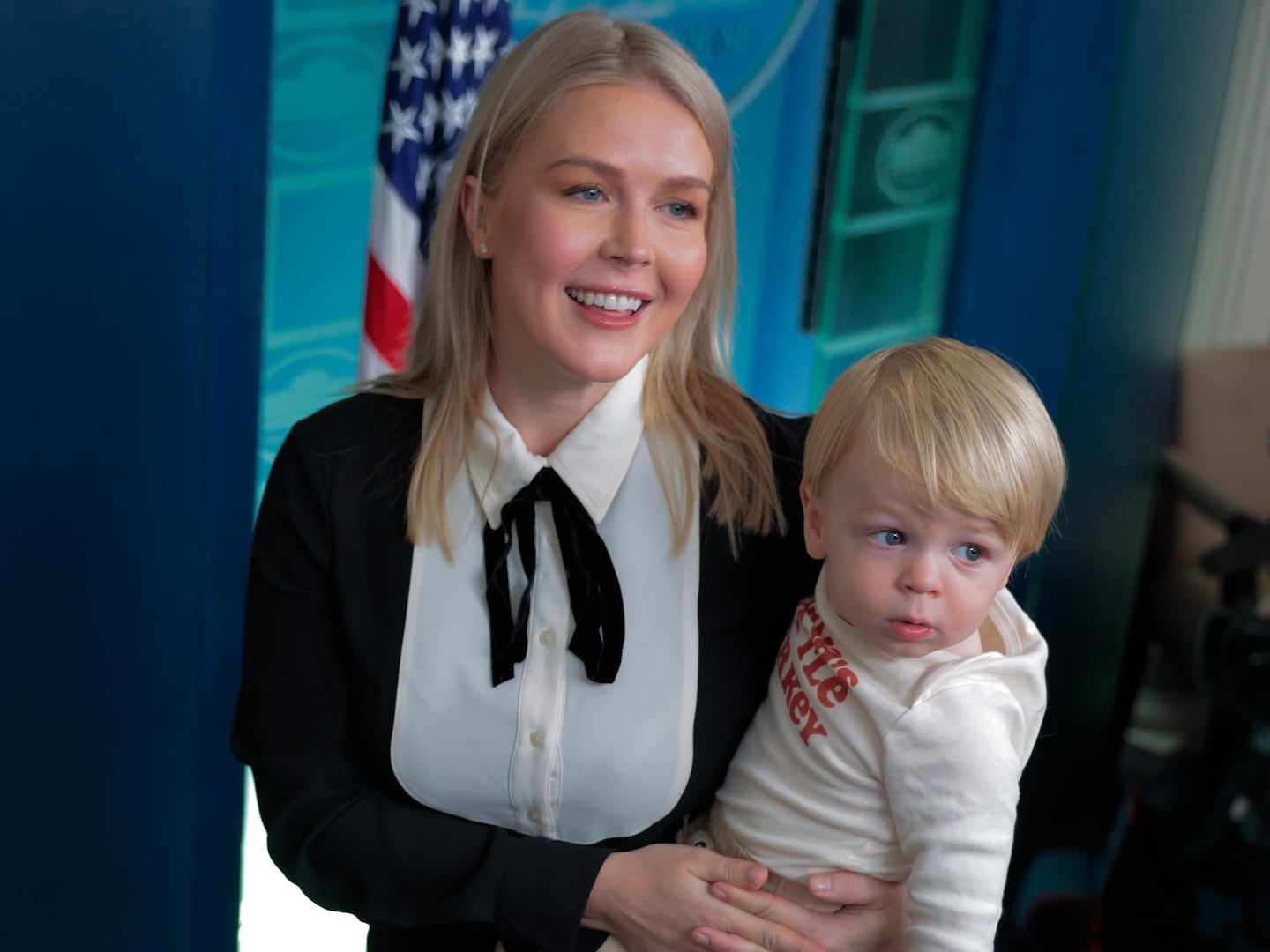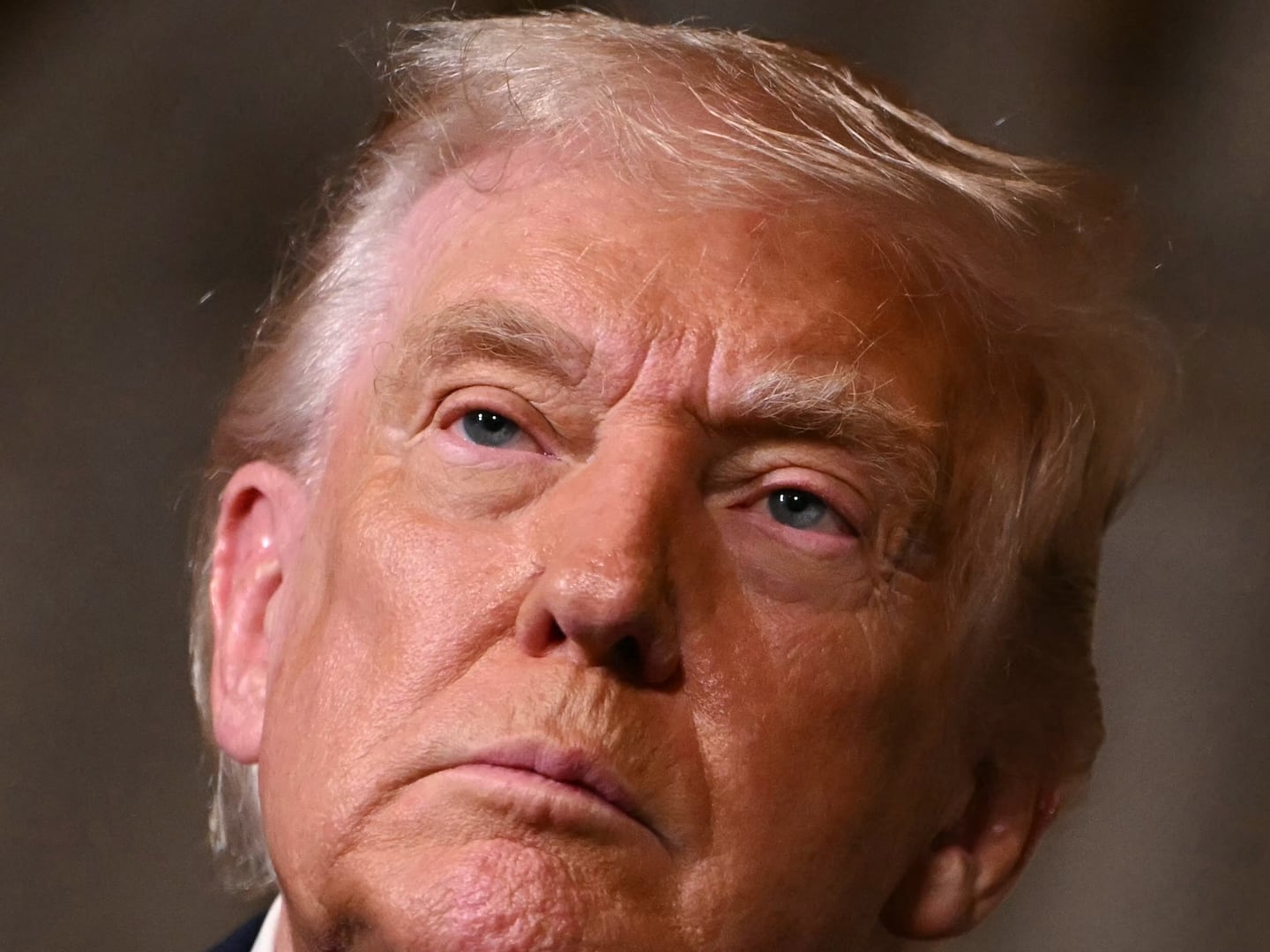In the wake of Christopher Kane’s departure from Versus, Donatella Versace decided to retool the label’s dynamic—one that she’s been overseeing since her brother Gianni Versace gave her the renegade brand’s lead responsibilities in 1990. Those changes, which have been carefully plotted in the last six months since Kane left, were presented in New York on Wednesday evening, marking the debut of two components: the newly named Versus Versace collection (a mélange of seasonless, referential designs for progressive youths) and a three-part collection that Versace designed in collaboration with Kane’s upstart London acolyte, 28-year-old J.W. Anderson.

When Kane first joined Versus in 2009, he was tasked with bringing the historically edgy brand, which Versace describes as “fearless, provocative, and rebellious,” out of a four-year hibernation. Fusing his signature flair for oddly matched prints and a poised sense of counterculture with Versace’s inherent whiff of sex appeal, Kane managed to position the brand as a player reborn for cool kids—many of whom were already clients of his namesake label.
Anderson has employed the same approach in his debut for Versus Versace, perhaps taking a page from Kane’s success, which recently earned him a majority stakeholder investment from Kering. Since debuting on the London fashion scene in 2008, Anderson has become a critical darling for his use of layered references that explore the more pervasive qualities of England’s sartorial classics.
For Anderson, Versus holds a deeper personal meaning. “When I was younger I was obsessed by the [Versus] imagery,” he explained to The Daily Beast backstage prior to the New York event. He says that Donatella Versace—who shares a buoyant, lighthearted relationship with the designer—challenged him. “She said you have to make things feel relevant for right now,” Anderson said of the directives he received.
The task is not entirely unnatural, as many of the early ’90s trends continue to cycle back into favor (Versus even took backless white patent go-go boots from 1993 out of its archives for Wednesday’s show). But according to Versace, the concept of referencing archival material is not all it’s cracked up to be, requiring creative interpretation no matter the current trend. “That is the difficult thing because you fall in love with your archives and want to put your archive straight back onto the runway,” she said. “But it doesn’t work.”
So rather than simply reproducing the ’90s, Versace took a more modern approach. She turned the Lexington Avenue Armory into a warehouse party on Wednesday, with performances by underground favorites—rapper Angel Haze, rock band Dead Sarah, and synth-pop crooner Grimes. The ambience, while clearly staged with a hefty budget, was remarkably true to New York’s current cool-kid form.
On the fashion side, Versus Versace’s mainstay collection (the one created without Anderson’s help) is a mix of modern silhouettes infused with the label’s ’90s DNA: studded leather, optical prints, safety-pin embellishments, and a trompe l’oeil take on chunky gold chains. The designs were immediately available for online purchase following their Wednesday-night premiere (shown in a video format rather than on a runway). In fact, the Internet will be a key component in Versus Versace’s new iteration. “It’s where young people live,” Versace said of today’s online dependence. “It’s changing everything. I know times are changing, I don’t want to lose contact in the reality of the moment.” It’s led her to think of her business not as individual markets, but as “one globe, there is a whole world looking at you from Japan, China, Italy—it doesn’t matter.”
The counterparts to Versus Versace’s relaunch are Anderson’s tough-luxe, topsy-turvy designs that were created “in three tableaus,” each one emphasizing a key detail from the brand’s history, such as safety pins and slashes. Their collaboration is a onetime thing for now, but that did not stop Versace from effusing her admiration for his young talent. She giggled praise for Anderson as he explained his (surprisingly) relaxed outlook on his future in London, following the big news of the Kering investment in Kane’s business. “Maybe this is me, but I always look at me and the people around me who I’m working with, and ultimately all that matters is right now—whatever happens, happens,” he said. “If it’s not a surprise, then what is the point?”






